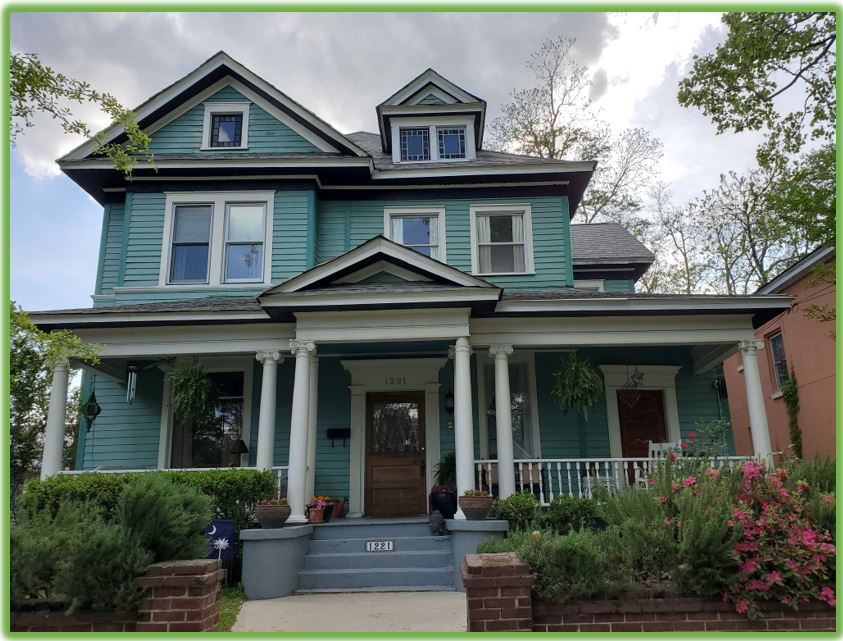
A blog post by Ramon M. Jackson, PhD
A lot has transpired since my last post as part of our ongoing conversation at the Silver Crescent Standard. Despite a global pandemic, increased racial strife, and changing life patterns, the South Carolina African American Heritage Commission (SCAAHC) has intensified its efforts to document, preserve and promote African American heritage across our state. It has been a privilege to work alongside this tireless, committed group of volunteers on a series of projects to amplify Black voices and preserve African American historic structures for future generations. I am also grateful to my colleagues in the State Historic Preservation Office (SHPO) for their kindness, flexibility and professionalism as we all adapt to this “new normal” while breaking new ground in African American historic preservation.
My role as African American Heritage Coordinator is to serve as the liaison between the SCAAHC and SHPO. Among my duties are to develop and implement educational programs and special events including lectures, classroom engagements, and public meetings. I also assist communities in identifying and planning for the preservation, maintenance, and interpretation of African American sites and properties. Moreover, I also coordinate the SCAAHC’s social media campaign (@SCAAHC1993 on Facebook, Twitter, and, Instagram), where I regularly promote SCAAHC programs, events, and publications such as The Green Book of South Carolina[, the Commission’s dynamic mobile travel guide to African American historic and cultural sites in South Carolina. This mobile guide features nearly 400 historic sites, museums, cemeteries, and cultural attractions for diverse audiences, allowing visitors to create customized itineraries for vacations, family reunions, field trips, walking tours, and other excursions. Over the past year, we have added entries recognizing state historical markers commemorating “Little Africa,” “Historic Mosquito Beach,” and “Civil Rights Sit-Ins in Florence, SC.” Are you aware of a historic site, monument, museum, or cultural attraction in your area that deserves mention? If so, please make a suggestion using this form.
Recently, we have experienced considerable success in our effort to survey and preserve historic buildings that once housed businesses listed in the Negro Motorists’ Green Book, a popular segregation-era guide for African American travelers. First published in 1936 by New York postal worker and entrepreneur Victor Hugo Green, the guide was created to provide Black travelers with information about businesses that served Black customers to help them avoid the dangers, difficulties, and embarrassments caused by southern Jim Crow and de facto segregation in other sections of the country. Our preliminary survey statewide survey revealed that there was at least one extant building in 8 of 20 South Carolina cities listed in the Green Book between 1938 and 1967. Several graduate students in USC History professor Bob Weyeneth’s “Capital City Field School” volunteered to research and draft preliminary information forms and nomination applications to list a few of these sites on the National Register of Historic Places. During the first virtual meeting of the State Review Board in July, a historic house on 1221 Pine Street in Columbia—the former location of Ruth’s Beauty Parlor —was unanimously approved for consideration by the Department of Interior! Special thanks to UofSC student Carlie Todd for all of her hard work. Three additional sites will be reviewed at the next Review Board meeting in November. If approved for listing, these Green Book sites will join the former tourist home owned by Harriett Cornwell, located on 1713 Wayne Street in Columbia, on the list of national historic sites deemed worthy of preservation. We will continue our efforts to fully document the history of the Green Book in South Carolina with a grant funded statewide survey over the coming year.


While the pandemic has not completely disrupted our work in historic preservation, it has dramatically altered the rhythms and traditions of African American life in our state. In May, the SCAAHC launched Portraits of a Pandemic, a document collection and oral history initiative to capture the experiences of African Americans in South Carolina during the ongoing public health crisis. This is the pilot project for Black Carolinians Speak, a broader African American oral history initiative spearheaded by the Commission. Participants are invited to share written testimonies, letters, photographs, social media posts, original artwork and music, and other historical materials via our web portal: www.greenbookofsc.com/speak. The goal is to build a collection that represents a broad segment of the African American community in all 46 counties in South Carolina. Black South Carolinians of all ages, genders, occupations, and backgrounds are invited to participate. All documents and historical materials will be included in the SCAAHC papers housed at SCDAH and will be made available to researchers and the public at a later date.
Since starting the project, we have collected over a hundred submissions and conducted dozens of oral history interviews with Black residents of fifteen South Carolina counties. Participants have shared reflections about the myriad changes in their daily routines, difficulties caused by the lockdown and social distancing mandates, testing issues and traumatic experiences as former patients or caretakers. Other stories are more uplifting. Couples have shared how the lockdown actually strengthened their marriage and families. Children have submitted photos of priceless fishing trips with granddad. A few interviewees even discovered they had green thumbs. All of these stories matter. Help us preserve them for future generations!
Lastly, congratulations to the WeGOJA Foundation—formerly the South Carolina African American Heritage Foundation—on their successful rebranding campaign completed on August 3, 2020. Established in May 2008, the WeGOJA Foundation is a non-profit 501c3 organization that supports the identification and documentation of African American heritage sites in South Carolina for the archival record, public awareness, education and enjoyment. Its executive director and board collaborate with civic, government and business leaders to execute its mission to support the efforts of the SCAAHC. This rebranding initiative was made possible with grant funding from the National Trust for Historic Preservation’s African American Cultural Action Fund, provided by the Andrew W. Mellon Foundation. To learn more about the meaning behind the new name—a fusion of words derived from three languages spoken by people of African descent brought to the Americas during the Transatlantic Slave Trade—and to take action to support African American historic preservation in South Carolina, visit www.wegoja.org.
